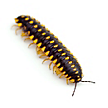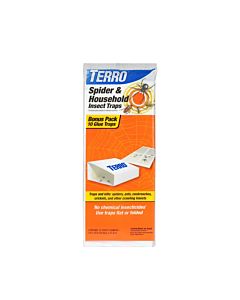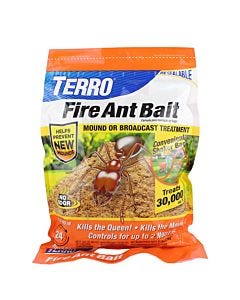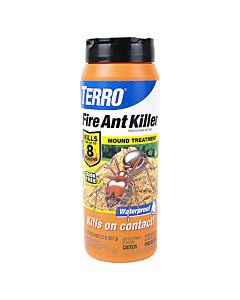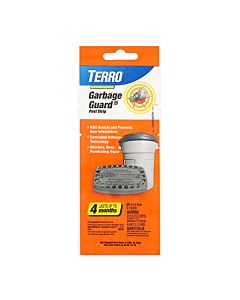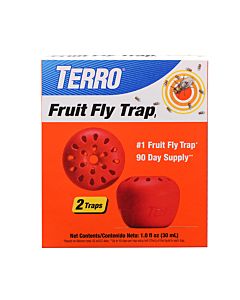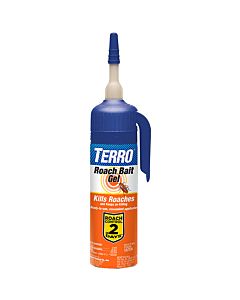MILLIPEDES
Millipedes are rarely destructive to properties, but they are unsightly and often unwelcome visitors to homes and businesses. TERRO® has several options to help you get rid of millipedes, and one of the first steps is to understand their habits and what attracts them.
What Are the Signs of Millipedes?
Millipedes do not leave many signs of an infestation. Usually the only way to know you have millipedes is by seeing them scramble from one bit of shelter to the next.
If you suspect you have an infestation, look for areas that contain material they may want to eat, including mulch, leaves, firewood and other plant material in various states of decomposition.
How Can I Get Rid of Millipedes?
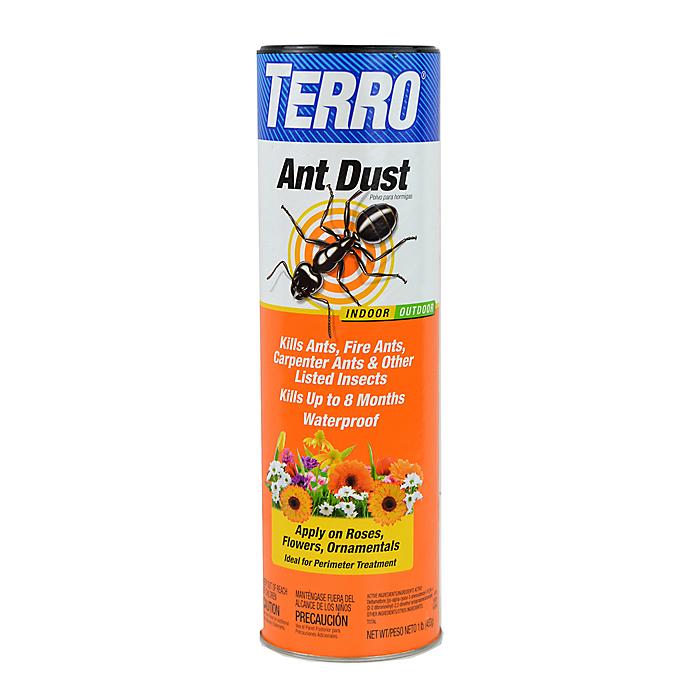
If you’re seeing an increase in millipedes in your mulch or have spotted a few invaders inside your home or garage, you can get rid of them easily with the help of several TERRO® products.
- TERRO® Ant Killer Plus - Treat the foundation of your home by applying in a three- to ten-foot band around it and then watering the granules into the soil for maximum effectiveness.
- TERRO® Ant Dust – Place in crevices or other out-of-the-way areas inside the home to protect against millipedes. Spread the ant dust outside uniformly along the perimeter of your home.
- TERRO® Spider & Insect Trap - When the millipede, or any other creepy bug, wanders over the trap’s surface, it will get stuck in the glue. When full of insects, dispose of it in a sealed bag.
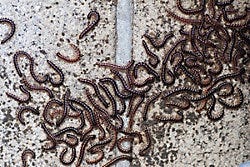
How Can I Control a Millipede Infestation?
Are millipedes swarming inside or outside of your home right now? It’s an unsettling sight for sure, but we have some good news: Other than being creepy, they’re probably not doing any harm to you or your property.
Still, you can take immediate steps to keep these creatures from spreading elsewhere.
- Dry Up – Millipedes are attracted to moist environments. Dry indoor spaces with humidifiers and make sure there isn’t any standing water.
- Remove – Clean up any food items that millipedes may be after. That includes mulch, firewood, sticks, leaves, and other decomposing plant material.
- Expose – Millipedes seek out shelter wherever they can find it, so eliminate potential hiding spots, including piles of lawn clippings, leaves, wood, and rocks. If possible, keep a bare zone of 12 to 18 inches from foundation walls.
- Wait – If you’ve got millipedes inside your home, you can simply wait. It’s unlikely that a millipede inside a building will survive long without proper food, water, and shelter.
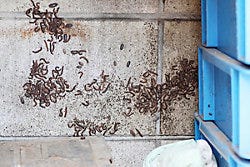
How Should I Clean Up the Millipedes that Entered My Home or Business?
After applying any of the control solutions above, removing millipede remains is an important sanitary and safety measure, especially if you have a large-scale millipede infestation.
Follow one of these procedures to remove millipedes:
- Put on latex gloves and pick up the millipede.
- For large numbers of small millipedes, vacuum them up and empty the bag immediately.
- Use a dust pan and broom to sweep them up.
- Large numbers of millipedes should be placed into a plastic bag that is then sealed and disposed of in an outside garbage container.
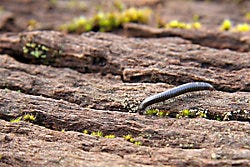
Are There Different Kinds of Millipedes?
North America has dozens of millipede species, and there are about 10,000 worldwide. Here are just a few of those most likely to appear north of the U.S.-Mexico border.
- Abacion texense – A thin, red millipede that measures about 2 inches on average. As a defensive mechanism, it can release an intense, stinky compound.
- Apheloria virginiensis – Measuring about a finger length, these millipedes secrete a mild cyanide compound that can be irritating to skin and eyes. They have black and yellow banding.
- “Flat millipedes” – Where most millipedes have a cylindrical body, the millipedes in the Polydesmida group have a flattened body shape. Colors vary by individual species but include black with yellow spots, a pinkish-brown and brown with yellow banding.
- Greenhouse Millipede – This millipede is thought to be a native of Japan, but it is now distributed throughout the world. Growing less than an inch long, earned their name by often being spotted in greenhouses.
- Narceus americanus – This large millipede has a gray body with red linking bands. It can reach up to 4 inches long. When threatened, it will curl up and release a substance that can cause skin irritation.

